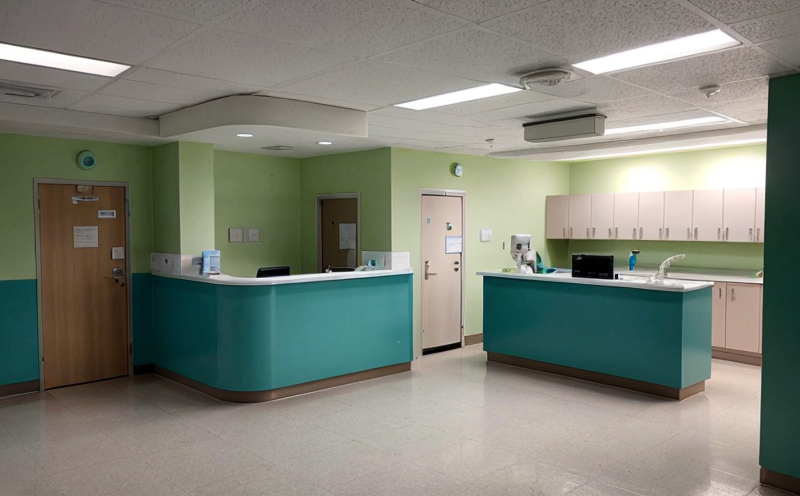WHO Infection Prevention and Control Environmental Testing
The World Health Organization (WHO) emphasizes infection prevention and control as a critical component of healthcare quality management. Environmental microbiology plays a significant role in ensuring patient safety by identifying potential sources of infections that can compromise the efficacy of medical treatments and increase morbidity rates.
Environmental testing for infectious agents involves assessing surfaces, air, water, and other environmental factors within hospital settings to identify potential vectors for microbial contamination. This service focuses on adhering to WHO guidelines, which are essential in ensuring consistent quality across different healthcare facilities worldwide.
The testing process begins with the collection of environmental samples such as swabs from high-touch surfaces like door handles, bed rails, and medical equipment, as well as air samples using specialized devices. These specimens are then transported under controlled conditions to our laboratory for analysis.
Upon arrival at the lab, the samples undergo rigorous testing procedures that include:
- Culture Methods: Isolating bacteria and fungi from the collected samples on selective media plates.
- Molecular Diagnostics: Utilizing PCR techniques to identify specific pathogens like Staphylococcus aureus (MRSA) or Pseudomonas aeruginosa.
- Spectrophotometric Analysis: Measuring the optical density of bacterial colonies to quantify microbial load.
The results are meticulously documented and reported in compliance with WHO standards. This ensures that healthcare facilities can take appropriate measures to control infections based on accurate data.
| Sample Type | Testing Methodology | Expected Turnaround Time |
|---|---|---|
| Surface Swabs | Culture and PCR | 3-5 business days |
| Air Sampling | Molecular Analysis | 2-4 business days |
This comprehensive approach ensures that healthcare facilities are well-equipped to address infection risks proactively.
Why Choose This Test
Selecting WHO infection prevention and control environmental testing for your hospital or healthcare facility offers several key advantages:
- Compliance with International Standards: Adherence to WHO guidelines ensures that your facility meets global best practices in infection control.
- Enhanced Patient Safety: By identifying potential sources of infections early, you can implement targeted interventions to prevent outbreaks and reduce patient harm.
- Evidence-Based Decision Making: Accurate data helps healthcare professionals make informed decisions about cleaning protocols and equipment sterilization methods.
- Cost-Effective Solutions: Preventing infections through proactive measures is more economical than responding to an outbreak, which can lead to higher treatment costs and longer hospital stays.
In summary, this service provides a robust framework for maintaining high standards of hygiene in healthcare environments, thereby contributing significantly to the overall quality of care provided.
Quality and Reliability Assurance
The reliability of our WHO infection prevention and control environmental testing services is underpinned by stringent quality assurance protocols. We employ highly qualified microbiologists who are trained in adhering to international standards such as ISO 17025 for proficiency.
All laboratory procedures follow standardized methodologies, ensuring consistent results across multiple samples. Our facilities are equipped with state-of-the-art instrumentation that allows for precise measurement and analysis of microbial loads. Regular calibration and validation ensure the accuracy of our equipment.
Moreover, we maintain detailed documentation of all testing processes, which is auditable to provide transparency and traceability throughout the entire testing cycle. This commitment to quality ensures that you receive reliable test results every time.
Use Cases and Application Examples
The WHO infection prevention and control environmental testing service has numerous applications in hospital settings:
| Use Case | Description |
|---|---|
| New Facility Commissioning | Testing helps identify contamination risks before patient occupancy. |
| Outbreak Investigation | Samples are collected from affected areas to pinpoint the source of infection. |
| Daily Monitoring | Regular testing ensures consistent hygiene standards across all departments. |
| Cleaning Effectiveness Verification | Evaluates the efficacy of cleaning protocols after implementation. |
| Staff Training Programs | Data from tests can be used to educate staff on proper infection control practices. |
| New Product Evaluation | Determines if new products or procedures are effective in reducing microbial load. |
| Regulatory Compliance Audits | Provides evidence for compliance with healthcare regulations and standards. |
Our team of experts can work closely with you to tailor the testing plan to meet your specific needs, ensuring that your facility remains compliant and safe.





